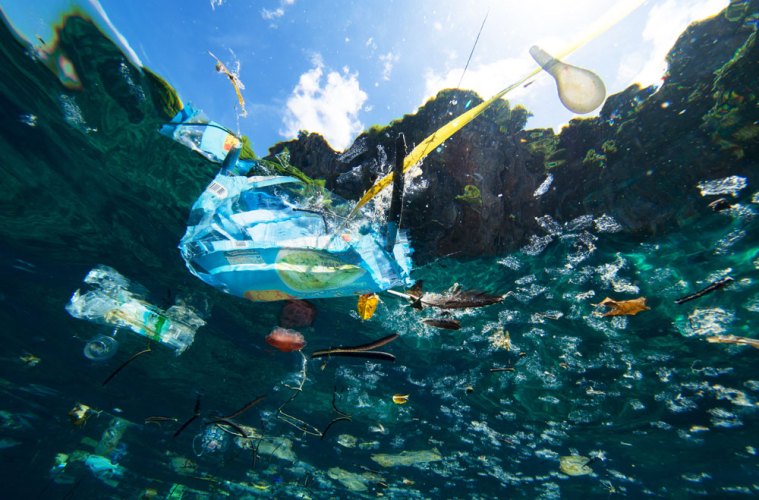Plastic Facts
The well-known symbol for recyclable (a triangle with arrows going around it) is deceptive. It doesn’t always mean the item is actually recyclable. The number inside the triangle is the important bit. Some plastics can be recycled and some not.
Plastic can be grouped into seven different types. The number in the triangle symbol indicates what it’s made from and if it can be recycled.
- PET Polyethylene terephthalate
- RPET Recycled polyethylene terephthalate
- HDPE High-density polyethylene
- PVC Polyvinyl chloride
- LDPE Low density polyethylene
- PP Polypropylene
- PS Polystyrene
- OTHER – BPA & Polycarbonate
PET is ‘virgin plastic’ made with petroleum-based material and no recycled content. It is commonly used for water bottles, soft drink bottles, packaging, meat trays, fruit punnets and other types of clear, rigid food packaging. These containers are designed for use once only, because repeated use increases the risk of bacterial contamination.
PET is globally recognized as a non-toxic, strong, lightweight, flexible material that is 100% recyclable. When it has been recycled, it is known as RPET (recycled PET). PET is the third most commonly recycled plastic in New Zealand.
When PET has been recycled, it is known as RPET (recycled PET). It’s just as safe for use as a food container as the original PET. RPET is created by recyclers who take bales of post-consumer PET, wash it, grind it and extrude it into plastic sheets or pellets that can be used to thermoform new food and drink packaging.
When RPET is created 100% from recycled PET, it is called ‘closed loop’ RPET, which is the very best kind because it means no virgin plastic was introduced into the process. There is no closed loop 100% RPET made in New Zealand and we don’t have any regulations governing how much recycled material needs to be included for plastic to be labelled RPET. However some plastic forming companies import closed loop RPET pellets from Asia to create 100% RPET products, because they believe it’s the most responsible thing to do.
This dense, rigid plastic is often used to make detergent bottles, toys, milk bottles and some plastic bags. It is the second most commonly recycled plastic in New Zealand and is considered the safest form of plastic. HDPE is long lasting, hard wearing and it is not affected by sunlight, heat or cold. Recycled HDPE is often used to make rubbish bins, picnic tables and a range of other products that need to be durable and weather-resistant.
A soft flexible plastic, PVC is used to make food wrap, flexible bottles, teething rings and blister packaging. Due to its flexibility, you’ll find it around cabling and also some plumbing pipes. It doesn’t break down under UV light, so can be recycled into garden hoses, window frames and other outdoor applications.
PVC is commonly known as the ‘poison plastic’, as it leaches toxins throughout its life. Never reheat food in a ‘3’ plastic container. In New Zealand, this is the fourth most commonly recycled plastic. PVC is re-used as piping, carpet backing, traffic cones and kayaks – items that will never be used around food.
This is a lightweight plastic that you’ll find in use as dry cleaner bags, shrink wrap, bubble wrap and bread bags. If you can push your finger through it easily, it’s probably LDPE. It’s relatively safe and can be recycled into bin liners, compost bins and outdoor furniture. It’s the most commonly recycled plastic in NZ.
A versatile plastic, PP is semi-rigid and heat-resistant. It’s used for a large variety of applications – medicine bottles, takeaway containers, plastic cutlery, margarine containers and potato chip bags. It’s considered safe to reuse and you’ll find it in landscaping materials, brooms, trays and automotive products, It accounts for about 4% of NZ’s recycling and is becoming more accepted by recyclers.
Polystyrene is inexpensive, lightweight and can be moulded into a number of different uses. Styrofoam cups, foam peanuts, insulation and the ‘clamshell’ style takeaway containers are all made from PS. It breaks up easily into small pieces, making it an environmental problem. It also leaches a chemical called styrene, which is a carcinogen. You should never reheat food in a polystyrene container.
Unfortunately, PS is not widely recycled and most of it goes to landfill. It is the least commonly plastic recycled in New Zealand. When it is recycled, it can be turned into light switches, packaging and plastic mouldings.
These plastics are a mix of manufacture types. They are used in virtually every form, from fruit juice cartons to oven bags. It’s the fifth most commonly recycled plastic in NZ and can be turned into low quality bottles or outside products. Rigid plastic polycarbonate is a number 7 and is present in children’s bottles and toys. Studies indicate it may leach BPA Bisphenol A and other hormone disruptors.
Confusingly, compostable plastics made from corn starch also are included in type 7. However these compostable plastics will have ‘PLA’ near the recycling symbol. These can be composted.
Sources:
https://learn.eartheasy.com/articles/plastics-by-the-numbers
http://www.recycle.co.nz/page.php?ref=recycled-waste&id=edit4cf831d8d2d96

